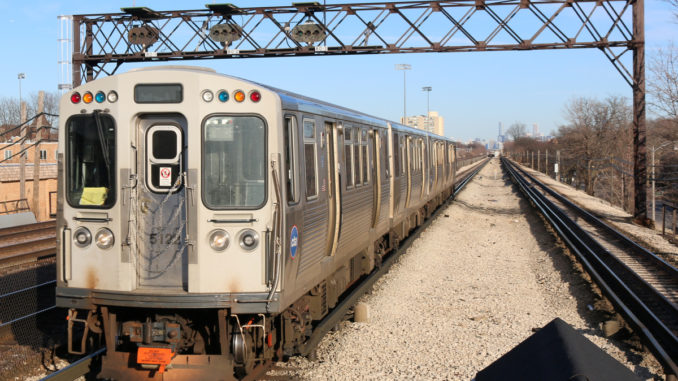
CHICAGO — The Chicago Transit Authority (CTA) is one of the nation’s largest public transit system, serving Chicago and 40 surrounding suburbs.
Each year, nearly two million customers use some combination of CTA, Pace and Metra to travel throughout the six-county region. CTA, an independent governmental agency, was created by state legislation.
Often referred to as the El or L, CTA began operations Oct. 1, 1947, though its history runs much deeper. CTA purchased the Chicago Rapid Transit Co., which operated from 1924 to 1947, and the Chicago Surface Lines.
The Chicago Rapid Transit Co. resulted as a merger between the Chicago and South Side Rapid Transit Co., which began operations in 1892; the Lake Street Elevated Railroad Co., which began operations in 1893; the Metropolitan West Side Elevated Railroad Co., which began operations in 1895; and the Northwestern Elevated Railroad Co., which began service in 1900.
As of 2016, the system carries an average of 1.7 million riders per day. Current CTA lines include:
- Blue Line: The 26.9-mile-long Blue Line has 33 stops and runs from O’Hare to Forest Park, Ill. The earliest portions of the line date to 1895 and were originally a part of the Metropolitan West Side Elevated Railroad. In The Loop area, the Blue Line uses the Milwaukee–Dearborn subway, which opened on Feb. 25, 1951.
- Red Line: Also known as the Howard-Dan Ryan Line or the North-South Line, the Red Line is the busiest CTA line. The 23.4-mile-long line has 33 stops. In The Loop, the line uses the State Street subway, which opened on Oct. 17, 1943.
- Brown Line: Operating between downtown and the Northwest Side, the Brown Line was originally constructed in two phases opening for service in 1900 and 1907. The line is the third busiest of CTA’s rail lines, serving more than 66,000 customers each weekday, with 19 stations from Kimball on the north to the downtown Chicago Loop.
- Green Line: The 20.7-mile-long line has the distinction of being the only completely elevated portion of the L. The Green Line runs over some of the system’s oldest segments, which date to 1892.
- Pink Line: The 11.2-mile-long Pink Line started service in June 2006 on a temporary basis and connects the former 54th/Cermak Blue Line branch to the Loop via a restored section of track known as the Paulina Connector. The Pink Line and the Green Line share trackage between Ashland and The Loop.
- Purple Line: The Purple Line extends from the Linden station in Wilmette to the Howard terminal in Chicago where customers can make connections with Red Line and Yellow Line trains. Purple Line Express trains operate Monday through Friday during morning and afternoon rush periods offering non-stop service from Howard to Belmont, then making all stops to the Loop.
- Yellow Line: The 5.1-mile line runs from Howard Terminal to Skokie, Ill., via Evanston, Ill. At Howard, it connects with the Red Line into The Loop area of Chicago. The line originally served as the Niles Center Branch of the former Chicago Rapid Transit Co. (CRT).
- Orange Line: The 12.5-mile long line runs from Midway International Airport to The Loop area of Chicago.
